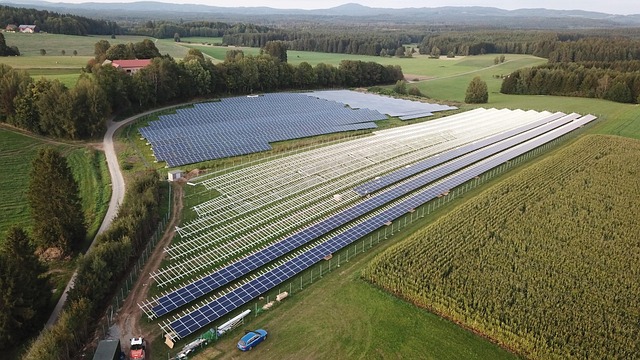Solar Energy and Its Role in Combating Climate Change
In the fight against climate change, one of the most promising solutions lies in the expansion and adoption of renewable energy sources, particularly solar energy. As the global community grapples with the increasing threat of climate change, understanding the role solar energy can play is imperative. This article delves into how solar energy can help combat climate change, its benefits, challenges, and the future prospects of solar energy technologies.
The Climate Crisis: An Overview
The scientific consensus is clear: human activities, particularly the burning of fossil fuels, are primarily responsible for climate change. The burning of these fuels releases greenhouse gases (GHGs) such as carbon dioxide (CO2) and methane (CH4) into the atmosphere, leading to the greenhouse effect. This phenomenon results in rising global temperatures, melting polar ice, severe weather events, and a plethora of environmental and social issues.
Addressing climate change requires significant reductions in GHG emissions, and transitioning to renewable energy sources is a vital part of this strategy. Among the renewables, solar energy stands out due to its abundance, accessibility, and decreasing costs.
Understanding Solar Energy
Solar energy is harnessed from the sun’s radiation through various technologies, primarily photovoltaic (PV) systems and concentrated solar power (CSP) systems. PV systems convert sunlight directly into electricity using solar panels, while CSP systems use mirrors or lenses to concentrate sunlight to generate thermal energy, which can then drive a turbine to generate electricity. Both technologies contribute significantly to meeting energy demands without increasing carbon emissions.
The Role of Solar Energy in Mitigating Climate Change
As one of the cleanest and most sustainable energy sources, solar energy plays a vital role in mitigating climate change in several ways:
Reduction of Greenhouse Gas Emissions
The primary benefit of solar energy is its potential to drastically reduce GHG emissions. Unlike fossil fuels, solar energy generation emits little to no pollution during operation. By replacing fossil fuel energy sources with solar energy, we can significantly cut the amount of CO2 released into the atmosphere.
Diversification of the Energy Supply
Relying heavily on fossil fuels creates vulnerabilities in energy supply, such as price volatility and geopolitical tensions. Solar energy can diversify the energy mix, contributing to energy security and stability. As more countries invest in solar technology, they reduce dependence on imported fossil fuels.
Job Creation and Economic Opportunities
The solar industry has become a significant source of job creation. As the demand for solar energy increases, so does the need for skilled workers in manufacturing, installation, maintenance, and research. According to the International Renewable Energy Agency (IRENA), the solar sector employed over 3.8 million people worldwide in 2020, showcasing its potential to stimulate economic growth while addressing climate challenges.
Accessibility and Decentralization of Energy Generation
Solar energy systems can be deployed at various scales, from small residential installations to large solar farms. This flexibility enables energy production closer to where it is consumed, reducing transmission losses and enhancing energy accessibility, particularly in remote and underserved regions. Moreover, decentralized energy generation empowers communities and can lead to increased energy independence.
Technological Advancements and Efficiency Improvements
Technological advancements in solar energy continue to improve the efficiency and reduce the costs of solar panels. Innovations such as bifacial solar panels, which capture sunlight on both sides, and solar tracking systems that follow the sun’s path can increase energy output. As technology matures, solar energy becomes an even more attractive option for both consumers and businesses.
Challenges Facing Solar Energy Adoption
While solar energy presents numerous advantages in combating climate change, challenges remain that could hinder its widespread adoption:
Intermittency and Energy Storage
Solar energy generation is dependent on sunlight, making it an intermittent energy source. This intermittency requires the development and deployment of efficient energy storage solutions, such as batteries, to ensure a reliable electricity supply even during low sunlight periods. Although battery technology has made significant strides, high costs and recycling concerns still present challenges.
Initial Costs and Financial Barriers
The upfront costs of installing solar panels can be a significant barrier for many individuals and businesses. While prices have decreased considerably in recent years, initial investment remains a hurdle. Government incentives, tax credits, and innovative financing models like power purchase agreements (PPAs) can help overcome financial barriers and incentivize adoption.
Land Use and Environmental Impact
The deployment of large-scale solar farms necessitates significant land usage, which can lead to habitat destruction and biodiversity loss. Planning and siting solar installations with careful consideration of environmental impact is crucial to minimize negative effects and ensure sustainable development.
Future Prospects of Solar Energy
The future of solar energy looks promising, with trends indicating continual growth and innovation. As the international community becomes increasingly committed to reducing carbon footprints, solar energy will play a pivotal role in achieving renewable energy targets. The following trends will shape the future of solar energy:
Global Policy Initiatives
Policies promoting renewable energy and energy efficiency are essential to combat climate change effectively. International agreements such as the Paris Agreement have spurred countries to adopt ambitious targets for renewable energy, providing a supportive framework for the growth of solar energy. Buffered by regulations, incentives, and financial programs, solar adoption has accelerated under supportive policies.
Decentralized Energy Systems
The trend toward energy decentralization is likely to continue. More households, businesses, and community organizations are seeking to generate their own power through solar installations, thus contributing to localized energy resilience. This shift could empower communities and establish a new paradigm for energy consumption and distribution.
Integration with Other Technologies
Technological integration will further enhance the role of solar energy. Pairing solar energy with other innovations, such as electric vehicles (EVs) and smart grid technology, could facilitate more efficient energy management and distribution. As these technologies converge, collective solutions can arise to address the energy challenge comprehensively.
Conclusion
Solar energy stands out as a critical player in the global effort to combat climate change. With its ability to provide clean, renewable energy while reducing greenhouse gas emissions, solar energy holds the keys to a more sustainable future. However, to fully harness its potential, concerted efforts are needed from governments, businesses, communities, and individuals to address the challenges facing solar energy adoption.
By investing in solar technology, driving policy changes, and advocating for sustainable practices, society can pave the way for a greener, healthier planet. The transition to solar energy is not merely an option; it’s an imperative for ensuring the well-being of future generations on our planet.



